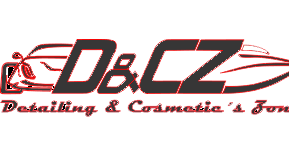Content

How do their https://adprun.net/ and colleagues rate them in their performance reviews? Performance metrics like these let you identify the top performers in your business and those with potential for leadership roles. The skills we rely on to keep up with our business demands are always changing. Understanding the skills you no longer require—and anticipating those you’ll need in the future—is part of ensuring you have the right team for your business. For an example of how to get the most out of your workforce planning efforts, consider Saddle Creek Logistics, one of the largest third-party logistics firms in the U.S.
Automating the more repetitive, manual functions will let you focus on analysis and planning, while dashboards and reporting will enable you to visualize the ongoing results. Meanwhile, a single source of truth—with data integrated from throughout the company—will make it possible to track the entire process. While contingent workers may not be full-time employees, they can provide significant value to your workforce and fill in gaps in the skill sets you have available. As such, managing and developing this workforce should be a key part of your planning process. Organizations must invest in workforce planning technology that supports predictive supply analytics, employee- level action-planning, bottom-up demand planning, and summarization of gaps. SAVIOM also provides tools for resource management, project portfolio management, and professional service automation.
HR Future-Proofing vs. Firefighting: 5 Strategic Workforce Planning Tips
It’s not only about preparing your organization, but it’s also about ensuring that your workforce is ready as well. No matter the size of your business, expect the rapid and ongoing change that won’t necessarily get dictated from within your organization. Unstable financial markets, fear, politics and natural disasters will influence customer attitudes and expectations, and that will have a knock-on effect on business. Financial stability allows businesses to weather most storms because even if they face cash flow challenges, they’ll have easy access to credit and funding. Healthy cash flow and a solid balance sheet also allows for more accurate budgeting.
- According to Bersin, only 20% of the workforce planning produce useful results for business leaders while forecasting revenue and operating budgets.
- Analyzing the workforce helps determine how to move toward higher productivity and profitability and means hiring strategies will meet strategic business objectives.
- It’s important that you tackle workforce planning step by step and keep an eye on market developments and technological advances inside and outside your industry.
- Some organizations attempt to identify how many employees in each job category will be needed to satisfy their strategic business plans for the next several years.
A similar analysis must also be made for other activities influenced by the increasing demand for water beds. In organizations that do not have a comprehensive HRIS, the payroll system represents a convenient starting point for developing an HRIS. Many firms have computer-based payroll administration systems, and others use time-sharing or computer service firms for processing payroll.
Are you ready for the future of HR?
This will begin to inform you in terms of what you should do and what concrete measures you may need to implement. Understand key mission goals and future objectives set by organization leadership and how the workforce needs to be aligned to achieve them. External trends that might have an impact on target markets, depending on your industry sector — examples include fashion trends, social change patterns, demographics in your target markets or new technologies. Customer data to forecast likely areas of future demand and growth — this will help determine whether more people will need to be hired to cope with expansion.
- In the figure above, for example, the expected student enrollment for next year is shown for several grade levels.
- As an organisation, it helps to sit down and define answers to each of these to try and bring meaning to each.
- Across every industry sector, data has become increasingly important when it comes to decision-making.
- Workforce planning pinpoints the problem areas and helps you close any emerging skills gaps quickly and effortlessly.
We can make all the predictions we want about the future labor market, but it wouldn’t be the first time that predictions proved worthless. And how should you tackle this way of working in your daily operations? Workforce planning is a continual process used to align the needs and priorities of the organization with those of its workforce.
Strategic Steps To Workforce Planning Success
Implementing a workforce planning system may seem too complicated if you wish to do it manually. This is especially true with the extremely high focus on getting and using the right data. The solution is to turn to emerge technologies- automation, big data and analytics, cloud etc. to build a workforce analytics solution.
Long-Levels Of Workforce Planning employment needs can be forecast from the subjective estimates of experts. Expert opinions may come from a group or from a single individual, such as the human resource director or a long-range planning specialist. This form of forecasting is considered to be the least sophisticated approach to employment planning. Experts typically base their judgments on their own intuition or past experience, the opinions of others, or the economic and social conditions they observe.
Implementing a Workforce Planning solution is no longer an option, it is a business imperative. The right workforce planning solution can help organizations make the most of their existing talent pool, thereby reducing hiring costs and dependence on external resources. Most importantly, it can help adequately harness the power of people- the most important differentiators in today’s business economy. 2016 by the Bureau of Labor Statistics, the number of hires have always exceeded job openings, except for very recently. This statistic shows that the ‘War for Talent’ is real, making it imperative for employers to make the best use of existing talent.
What are the three types of workforce planning?
- Stage 1: Supply and Demand Analysis.
- Stage 2: Gap Analysis.
- Stage 3: Develop and Implement an Action Plan.
- Real-World Workforce Planning.
Special forms and questionnaires can be developed for collecting the information, but if the forms create unnecessary paperwork, the system can lose much of its effectiveness. Reduce costs by helping management anticipate shortages or surpluses of human resources and correct imbalances before they become unmanageable and expensive. Check out our article about the top five workforce planning tools you can try today. All of this is to say that the responsibilities of workforce planning will vary by organisation. It really depends on the role an HR team has, and whether or not they have been able to reserve their own spot at the table of management.
What external influences can impact the company’s objectives?
If several people quit because of unpleasant working conditions, the work environment needs to be examined and improved. However, not much can be done to eliminate competing alternatives from other organizations. Some hospitals use a patient acuity system that is a form of work-load analysis to measure the amount of care patients will need and to plan for adequate staff. Law offices also use a work-load analysis to determine how many legal assistants to hire.


 El carrito está vacío
El carrito está vacío
Leave A Comment